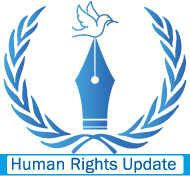There is a clear path to ending AIDS by 2030 and it requires strong political leadership, following the science, tackling inequalities and ensuring sustainable funding.
That’s the message from UNAIDS, the UN agency dedicated to ending the epidemic, which said on Thursday that truly eradicating it boils down to a “political and financial choice”.
The agency’s Executive Director, Winnie Byanyima, said that today’s leaders have the opportunity to save millions of lives and be “remembered by future generations” as those who put a stop to the world’s deadliest pandemic.
‘Show what leadership can do’
“They could save millions of lives and protect the health of everyone. They could show what leadership can do”, she said.
According to a new UNAIDS report, Botswana, Eswatini, Rwanda, Tanzania, and Zimbabwe have already achieved what is known as the “95-95-95” targets: 95 per cent of the people who are living with HIV know their status, 95 per cent of those who know that they are living with HIV are on lifesaving antiretroviral treatment, and 95 per cent of people in treatment are virally suppressed.
Steady progress
Progress has been strongest in the countries and regions that have spent most on tackling HIV/AIDS such as in eastern and southern Africa, where new HIV infections have been reduced by 57 per cent since 2010.
Following support and investment to end AIDS among children, 82 per cent of pregnant and breastfeeding women living with HIV globally were able to access antiretroviral treatment last year – up from 46 per cent in 2010.
New infections among children have fallen by 58 per cent during the same period, the lowest number since the 1980s, UNAIDS reported.
Progress has also been bolstered by ensuring legal and policy frameworks do not undermine human rights, but rather enable and protect them. Countries have continued to rollback harmful laws. In the past two years, Antigua and Barbuda, the Cook Islands, Barbados, Saint Kitts and Nevis, and Singapore, have all decriminalized same-sex relations.
The number of people on antiretroviral treatment worldwide rose nearly fourfold, from 7.7 million in 2010 to 29.8 million in 2022.
A life a minute
But there is still a long way to go to meet the aspiration of ending AIDS by 2030. AIDS claimed a life every minute last year, said the UN agency, and some 9.2 million people still miss out on treatment, including 660,000 children living with HIV.
Women and girls continue to suffer disproportionately, especially in sub-Saharan Africa. Around 4,000 young women and girls became infected with HIV each week in 2022.
Getting sufficient funding to meet the challenge is also proving hard, with an overall decline last year from both domestic and international sources. Funding amounted to $20.8 billion, far short of the $29.3 billion needed by 2025.
Cautious optimism
“We are hopeful but it is not the relaxed optimism that might come if all was heading as it should be”, said Ms. Byanyima. “It is, instead, a hope rooted in seeing the opportunity for success, an opportunity that is dependent on action”.
“The facts and figures shared in this report do not show that as a world we are already on the path, they show that we can be. The way is clear.”






